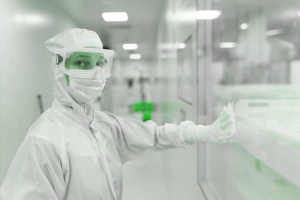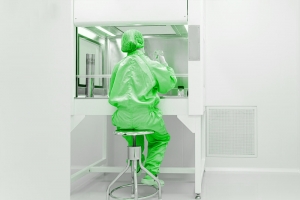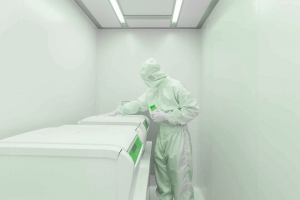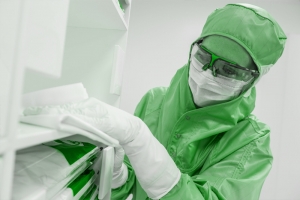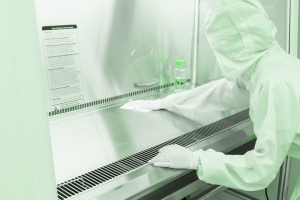Displaying items by tag: cleaning
Cleanroom Surface Wipe Down: Steps & Supplies for Effective Cleaning
Cleanrooms require distinct approaches at different decontamination stages including cleaning, sanitation, disinfection, and sterilization. Each procedure involves similar yet distinct methodologies to address specific contaminants, particles, and microbial burdens among various enclosures, surfaces, and equipment. In cleanroom environments, it is imperative that all cleaning supplies meet the cleanroom-rated standards corresponding to the ISO rating of the specific area.
Eight Tips to Keep your Cleanroom Clean and Working Properly
Regular maintenance of your cleanroom is necessary to keep your cleanroom classification and CGMP status. This includes weekly cleanroom deep cleaning, regularly checking and change out prefilters on return air grills, monthly internal cleanroom particle test, annual 3rd party cleanroom particle test, regular HVAC maintenance, immediate repair any damaged cleanroom element , and proper training of cleanroom personnel.
How are cleanrooms typically cleaned?
Cleanrooms require stringent cleaning procedures to maintain their sterile environment and prevent contamination in these sensitive areas. The cleaning process typically follows strict guidelines and protocols to minimise contamination and ensure the cleanroom meets industry standards.
The Science Behind Cleanrooms: What Keeps Them Clean?
To make cleanrooms clean the cleanroom are built using HEPA filtration, non-particulating materials, airlocks, and non-particulating flooring. In addition, cleanroom personnel follow special rules such as wearing cleanroom garments, no eating or drinking, and wipe down the cleanroom on regular basis. Finally, cleanrooms monitor the cleanliness of the room using particle testing and biological settling plates.
What is an ISO-7 Cleanroom Classification?
ISO-7 cleanroom classification is a common medium level of the cleanroom classes. The ISO cleanroom standards are set by the International Organization for Standardization (https://www.iso.org/standards.html). They are a private international organization with a membership of 167 national standards bodies. The ISO cleanroom classification system used in the United States is primarily for pharmaceutical cleanrooms, medical device cleanrooms, biotech cleanrooms, life-science cleanrooms, and USP797/800 compounding cleanrooms. Europe and the rest of world uses the ISO cleanroom classification system for all industries except semiconductor.
ISO Class 7 Cleanroom Standards | Particulate, ACH, Requirements
In accordance with the ISO 14644 standards, ISO Class 7 cleanrooms represent a highly controlled environment that is engineered to maintain specific cleanliness values. The enclosed system encompasses ceiling-mounted fan filter units (FFUs) that generate a continuous supply of HEPA or ULPA-filtered air. In this article, we'll cover top-level considerations and standards for ISO 7 cleanroom design and construction. Additionally, we'll explore general principles for ISO 7 standards including particulate levels, ACH requirements, and equipment-based considerations among several unique applications.
How to Implement Three Cleaning Best Practices for Your Cleanroom
Maintaining a compliant cleanroom is vitally important. CLIN, a leading manufacturer of cleaning and disinfection supplies, is committed to partnering with customers in various industries such as pharmaceutical manufacturing, biotechnology, and ATMP manufacturing.
Confusion over cleaning
I have to admit, I’ve also been confused about the cleaning protocols and procedures for a cleanroom environment. The basic techniques, I’ve got that down (but I’ll talk about that too); there’s a lot of products to clean with and rotating your cleaning agents. It’s confusing to say the least and the internet is vast and for something so important how do you trust the information (since you are reading this online – myself included!)? I’ll share my references and you can see where I’m getting this information on clean room protocol. I’ve found a source that not only knows what they’re talking about and have the proper credentials but also speaks on a practical level that makes sense to me. I’ll try to be as concise as possible in explaining this because you’ll see the basics don’t necessarily warrant an hour long discussion.
Why Proper Cleanroom Cleaning Is Crucial to Your Success
When you operate a cleanroom, it's imperative to maintain strict standards of cleanliness in the facility at all times. Whether you work in healthcare, biotechnology, pharmaceuticals, aerospace, or any other setting where cleanrooms are employed, a rigorous cleaning protocol is vital.
Cleaning Cleanrooms: How Often Should You Have Your Cleanroom Cleaned?
After investing in a top-of-the-line cleanroom, keeping it in pristine condition is crucial. When properly cared for, a cleanroom will function at peak performance. If not, the quality of the cleanroom can quickly deteriorate, affecting daily operations.


